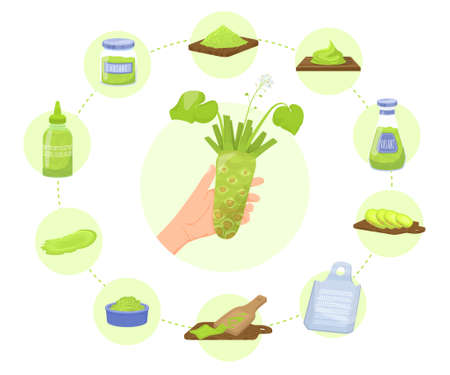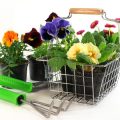1. Introduction to Smart Irrigation Systems
Smart irrigation systems are changing the way American homeowners and landscapers manage water use in their gardens and yards. With growing concerns about water conservation and rising utility costs, these high-tech systems offer a smarter, more efficient way to keep your lawn and plants healthy without wasting water.
Unlike traditional sprinkler systems that operate on fixed timers, smart irrigation systems use real-time data like weather forecasts, soil moisture levels, and plant types to adjust watering schedules automatically. This means you’re not watering during a rainstorm or overwatering your garden during cooler months.
How Smart Irrigation Systems Work
Smart irrigation systems connect to your home Wi-Fi and are usually controlled through a smartphone app or web dashboard. They collect local weather data from online sources or built-in sensors and adjust watering times accordingly. Some advanced models even allow zone-specific settings based on plant needs and soil conditions.
Main Components of a Smart Irrigation System:
| Component | Description |
|---|---|
| Smart Controller | The brain of the system; adjusts watering schedules using weather and soil data. |
| Soil Moisture Sensors | Measure how much water is in the ground to avoid overwatering. |
| Weather Integration | Uses local forecast data to skip or delay watering during rain or cool days. |
| Mobile App Control | Allows remote scheduling, manual overrides, and monitoring from anywhere. |
| Zone Customization | Lets you set different watering rules for lawns, flower beds, and vegetable gardens. |
Why Smart Irrigation Is Becoming Essential in the U.S.
In many parts of the United States—especially in drought-prone states like California, Arizona, and Texas—water conservation is not just a personal choice but often a requirement. Cities are enforcing watering restrictions, and homeowners are looking for ways to stay compliant while still maintaining beautiful outdoor spaces. Smart irrigation helps meet those goals by reducing water waste by up to 30% or more compared to traditional systems.
Additionally, smart irrigation aligns with modern lifestyles. Whether youre busy at work or away on vacation, your garden can still get the care it needs without you having to lift a finger. Plus, many systems qualify for rebates from local utilities, making them an affordable upgrade for eco-conscious homeowners.
2. Top Smart Irrigation Systems on the Market
Choosing the right smart irrigation system can make a big difference in how efficiently you water your lawn or garden. Below, we compare some of the leading smart irrigation systems available in the U.S., focusing on popular brands, standout features, and the types of users they’re best suited for.
Popular Smart Irrigation Brands
Here are some of the most trusted names in smart irrigation technology:
- Rachio – Known for its easy-to-use interface and weather-based scheduling.
- Orbit B-hyve – Great for budget-conscious homeowners looking for reliable performance.
- RainMachine – Offers strong data privacy and local control without needing a cloud connection.
- Netro – Ideal for tech-savvy gardeners who want AI-driven watering schedules.
- Eve Aqua – A good option for Apple HomeKit users with smaller gardens or patio setups.
Comparison Table: Key Features at a Glance
| Brand & Model | Main Features | Best For | Smart Home Integration |
|---|---|---|---|
| Rachio 3 | Weather intelligence, app control, customizable zones | Homeowners with medium to large yards | Alexa, Google Assistant, Apple HomeKit |
| Orbit B-hyve XR | WeatherSense tech, Wi-Fi hub included, manual override | Budget-friendly option for average-size lawns | Alexa, Google Assistant |
| RainMachine Touch HD-12 | No cloud required, touchscreen display, open API | Tech-savvy users and privacy-conscious gardeners | Alexa, Google Assistant (limited) |
| Netro Smart Sprinkler Controller | AI-based scheduling, self-learning, solar-powered option available | Sustainable gardeners and modern landscapes | Alexa compatible |
| Eve Aqua (2nd Gen) | Bluetooth connectivity, compact design, water usage tracking | Small gardens or balcony planters (Apple users) | Apple HomeKit only |
Simplifying Your Choice Based on Use Case
If You Have a Large Lawn:
The Rachio 3 is a strong choice thanks to its zone customization and advanced weather intelligence. Its ideal for larger properties where water conservation and automation are key.
If Youre Watching Your Budget:
The Orbit B-hyve XR offers a solid balance of features and affordability. It’s a great starter option that doesn’t skimp on smart capabilities.
If You Prefer Local Control:
The RainMachine gives you more control over your data by not requiring a cloud connection. It’s perfect if youre concerned about privacy or internet outages.
If You Love Automation and Sustainability:
The Netro controller uses AI to learn from your habits and weather patterns to create an efficient watering schedule. Plus, its solar-powered version adds an eco-friendly touch.
If You Have a Small Garden or Patio:
The Eve Aqua works well with hose timers and is easy to set up without complicated wiring. It’s especially convenient for those already using Apple HomeKit devices at home.
No matter your yard size or tech preference, theres a smart irrigation system out there that can help you save water while keeping your plants healthy all season long.

3. Key Features and Technologies
When choosing a smart irrigation system, its important to understand the key features and technologies that can help you save water, reduce bills, and keep your lawn or garden healthy. Below are some of the most valuable features to look for when comparing top-rated systems.
Weather-Based Scheduling
This feature uses real-time weather data to adjust your watering schedule. If it’s going to rain, the system will automatically skip watering. On hot days, it may increase watering frequency. This helps prevent overwatering and saves you money on your water bill.
Benefits of Weather-Based Scheduling:
- Saves water by avoiding unnecessary watering
- Protects plants from over- or under-watering
- Adjusts automatically without manual input
Soil Moisture Sensors
These sensors measure the moisture level in the soil and send data back to the controller. If the soil is still moist, the system will delay watering. This feature is especially helpful in regions with unpredictable rainfall or varied soil types.
Main Advantages:
- Customized watering based on actual soil conditions
- Reduces water waste
- Keeps plants healthier with consistent moisture levels
Mobile App Integration
A mobile app lets you control your irrigation system from anywhere using your smartphone or tablet. You can start or stop watering, set schedules, check weather updates, and monitor system performance all in one place.
Why It Matters:
- User-friendly interface for remote access
- Instant alerts for system issues or weather changes
- Easier management of multiple zones or properties
Voice Assistant Compatibility
The best smart irrigation systems work with voice assistants like Amazon Alexa, Google Assistant, or Apple HomeKit. This allows you to control your sprinklers hands-free using simple voice commands.
Popular Voice Commands Include:
- “Alexa, turn on the front yard sprinklers.”
- “Hey Google, skip todays watering.”
- “Siri, how much water did my garden get today?”
Feature Comparison Table
| Feature | What It Does | Why It’s Useful |
|---|---|---|
| Weather-Based Scheduling | Automatically adjusts watering based on local weather forecasts. | Saves water and prevents overwatering during rainy days. |
| Soil Moisture Sensors | Senses current soil moisture to determine if watering is needed. | Avoids unnecessary watering and promotes plant health. |
| Mobile App Integration | Lets you control your system remotely via smartphone or tablet. | Adds convenience and flexibility to manage irrigation anytime. |
| Voice Assistant Compatibility | You can operate your system using voice commands with smart speakers. | Makes operation easy and hands-free. |
Selecting a smart irrigation system with these features ensures youre investing in convenience, efficiency, and sustainability for your home landscape.
4. Benefits of Upgrading to a Smart Irrigation System
Smart irrigation systems are transforming how homeowners manage their landscapes. By using advanced technology like weather sensors, soil moisture detectors, and smartphone integration, these systems offer a wide range of practical benefits that go far beyond just watering your lawn.
Conserve Water Efficiently
One of the biggest advantages of smart irrigation is water conservation. Traditional sprinkler systems often overwater or run even during rainfall. Smart systems adjust watering schedules based on real-time weather data and soil conditions, ensuring your plants get just the right amount of water—no more, no less.
Lower Your Utility Bills
Because these systems optimize water usage, they can significantly reduce your monthly water bill. Over time, the savings can offset the initial investment in the smart system.
Average Water Savings by System Type:
| System Type | Estimated Water Savings | Potential Monthly Savings* |
|---|---|---|
| Traditional Timer-Based | 0% | $0 |
| Weather-Based Smart Controller | 20-30% | $10–$25 |
| Soil Moisture Sensor System | 30-50% | $15–$40 |
*Savings vary depending on yard size and local water rates.
Improve Plant Health
Your plants thrive when they receive consistent and appropriate watering. Smart systems prevent both overwatering and underwatering by adjusting to daily environmental changes. This results in stronger roots, fewer diseases, and healthier lawns, flowers, and shrubs.
Simplify Landscape Maintenance
No more manually adjusting timers or remembering to turn off sprinklers before a rainstorm. With app-based controls and automated scheduling, you can manage your entire irrigation system from your smartphone—even if youre out of town. Some systems also send alerts for leaks or malfunctions, helping you fix issues before they become costly repairs.
5. Installation and Setup Tips
Getting your smart irrigation system up and running doesnt have to be complicated. Whether youre a seasoned DIYer or planning to hire a pro, following the right steps can save you time, water, and frustration. Here are some practical tips to help you install and set up your system effectively.
DIY vs. Professional Installation
Deciding between doing it yourself and hiring a professional depends on your comfort level with plumbing and tech setup. Heres a quick comparison:
| Option | Pros | Cons |
|---|---|---|
| DIY Installation | Saves money, flexible schedule, satisfying for hands-on homeowners | Requires time, basic tools, and some tech knowledge |
| Professional Installation | Quick and efficient, expert setup, warranty support | Higher upfront cost, scheduling required |
Pre-Installation Checklist
- Know your zones: Map out your yard and identify watering zones based on sun exposure, plant types, and soil conditions.
- Check water pressure: Make sure your homes water pressure meets the requirements of the irrigation system youre installing.
- Wi-Fi coverage: Ensure strong Wi-Fi signal reaches the area where the controller will be installed.
- Select the right controller location: Choose a weather-protected spot near a power source and accessible plumbing connections.
Basic Installation Steps
- Turn off the water supply before starting any installation work.
- If replacing an old controller, label existing wires before disconnecting them.
- Mount the new smart controller on a wall or post using included hardware.
- Connect zone wires according to manufacturer instructions.
- Power on the device and connect it to your home Wi-Fi network using the mobile app.
- Set up watering schedules based on local weather data and plant needs.
Troubleshooting Tips
- If your controller isn’t connecting to Wi-Fi, try moving your router closer or using a Wi-Fi extender.
- Check for firmware updates through the app to ensure optimal performance.
- If zones aren’t activating properly, double-check wiring connections and valve functionality.
Pro Tip:
If youre not confident about electrical or plumbing work, its worth hiring a certified irrigation technician. Many manufacturers offer lists of approved installers in your area through their websites.
Your Smart Watering Journey Starts Here!
A successful installation is key to getting the most out of your smart irrigation system. Take your time during setup, follow best practices, and don’t hesitate to reach out for professional help if needed. Once everything’s in place, you’ll enjoy healthier plants and lower water bills—all with minimal effort!


